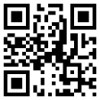This paper investigates the possibilities that cross-linguistic similarities and dissimilarities between related languages offer in terms of bootstrapping a morphological analyser. In this case an existing Zulu morphological analyser prototype (ZulMorph) serves as basis for a Xhosa analyser. The investigation is structured around the morphotactics and the morphophonological alternations of the languages involved. Special attention is given to the so-called "open" class, which represents the word root lexicons for specifically nouns and verbs. The acquisition and coverage of these lexicons prove to be crucial for the success of the analysers under development. The bootstrapped morphological analyser is applied to parallel test corpora and the results are discussed. A variety of cross-linguistic effects is illustrated with examples from the corpora. It is found that bootstrapping morphological analysers for languages that exhibit significant structural and lexical similarities may be fruitfully exploited for developing analysers for lesser-resourced languages.
| 

